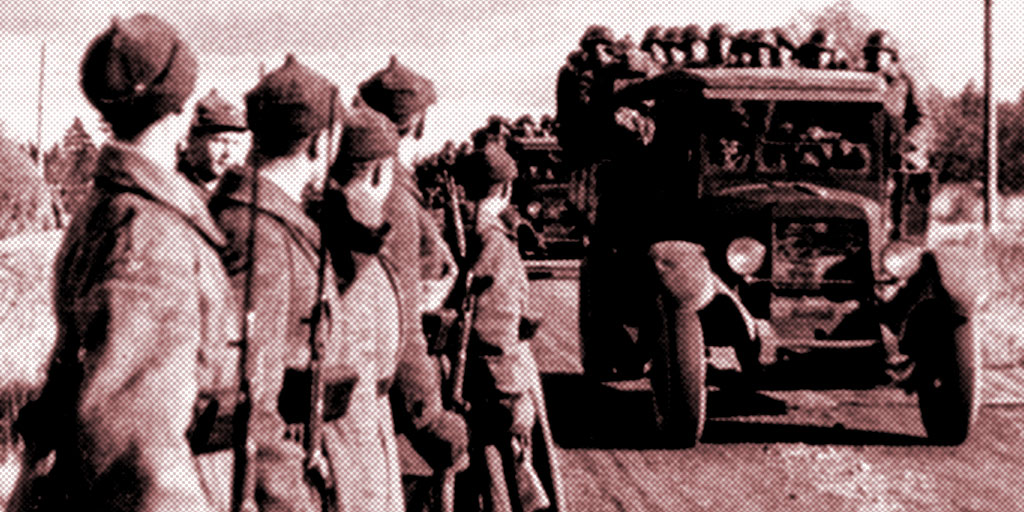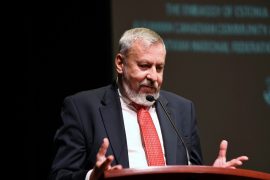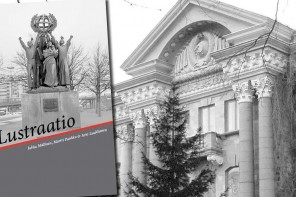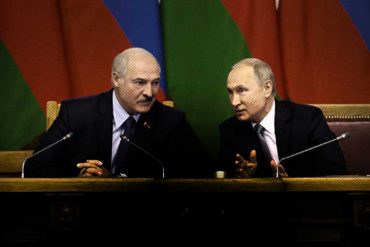An interview with The Jews in Latvia Museum Director, Ilja Lenskis
Eighty years ago this month, as the world’s attention was focused on Nazi German troops that were marching down the Champs-Élysées in Paris, The Soviet Union invaded Estonia, Latvia and Lithuania, leading to the eventual occupation and illegal annexation of the Baltic States in August 1940.
Europe was split into two spheres of control: A Western sphere, occupied by Adolf Hitler, and an Eastern one, controlled by Josef Stalin. The arrangement was the outcome of a secret pact signed by Hitler and Stalin on August 23, 1939, known as the Molotov-Ribbentrop Pact.
In the year that followed the Soviet 1940 invasion of the Baltic States, mass arrests become the norm, culminating in the mass June deportations of 1941.
While some people opted to cooperate with Soviet authorities, and some ideologically supported them, resistance groups also appeared. Their aim was to restore the independence of their countries and disrupt and stop Soviet terror against their countrymen.
Between 1940-1944, the Baltic States were invaded and occupied three different times – the last of which did not end until the early 1990’s when the last Soviet troops exited from the Baltic States on August 31, 1994.
Jewish-Latvian historian and director of the “Jews In Latvia Museum”, Ilja Lenskis, explained to me earlier this year in Ottawa, that in 1940, “the Soviets presented themselves as liberators, telling Latvians they would restore the Parliament,” which Latvia’s then nationalist authoritarian Prime Minister Karlis Ulmanis had shut down in 1934. Ulmanis told Latvians not to resist the Soviet invasion, telling them that, “I will remain in my place and you remain in yours”.
After imposing ultimatums on all three Baltic States, 500,000 Soviet forces invaded Lithuania, Latvia and Estonia on June 15-16 1940, occupying them in a matter of days; and just one week before Stalin’s German allies conquered France.
Shortly after the Soviet invasion, the mass repression and arrests of the Baltic populations began. “We see that Jews were also arrested, despite what later Nazi propaganda would claim” explains Lenskis. By August 1940 “absolutely all Jewish public organizations and most of the Jewish schools were liquidated, as well as the Jewish periodicals.”
Widespread arrests of politicians, civil society leaders, professionals and business people through the following year, culminated in the mass deportations of June 14, 1941. According to Lenskis “the Jews were a visible part of the deportees – about 12%, while being only 5% of the general population. Some 2% of Latvian Jews was deported on the nights of June 14 and 15.”
The narrative that Jews were “avid supporters of the Soviet regime is simply false, but was a narrative extensively spread by Nazi propaganda,” says Lenskis.
Just as Hitler as turning his guns towards the Soviet Union in June 1941, Soviet authorities ordered mass deportations in all three Baltic States. According to historian and Yale University professor, Timothy Snyder, Soviet authorities deported over 40,000 people from Estonia, Latvia and Lithuania in June 1941.
The terror caused by the Soviet mass deportations caused many in the Baltic States to mistakenly greet the invading German army as liberators.
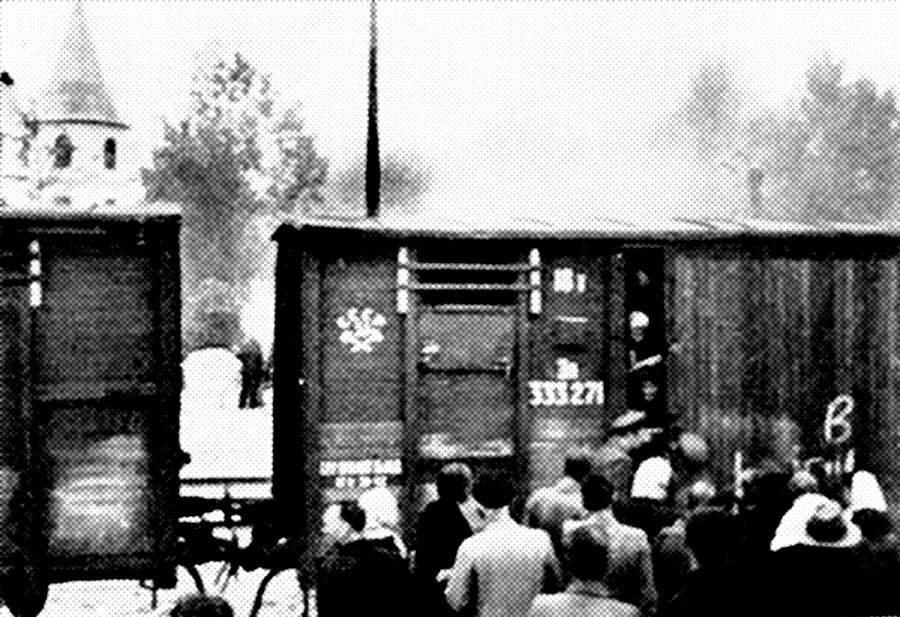
Far from freeing the people of the Baltic States, the Nazi occupying forces set up their own administration. And as the Nazis did in Poland or Netherlands, they set out to annihilate the local Jewish population and other minorities, with the assistance of local collaborators.
Propaganda, crafted by the occupying Nazi authorities, amplified fear and outrage within the already traumatized local population, using antisemitic narratives to falsely assign blame for political repression organized and carried out by Soviet authorities, on the Jewish community.
The Germans highlighted in their propaganda, “that the Minister of State Security, Simon Shustin was Jewish,” who according to Lenskis, was just a Moscow appointed henchman without any Latvian-Jewish background at all.
“Of course the Nazis, who occupied Latvia a bit more than a week after the June Deportations, exploited this trauma because Latvians wanted to understand who was responsible for what happened.” says Lenskis. “Most of the Soviet leadership escaped Latvia, so the Nazis offered the very simple explanation that the Jews are guilty: the entire repressive system was presented as being Jewish.”
“Parallel to that, synagogues were burned: the burning of the Great Synagogue of Riga, with people inside, was filmed for German propaganda newsreel, ‘Deutsche Wochenschau’ with a comment that said Latvians were taking revenge for the crimes committed by the ‘Jewish Bolsheviks’ during the year of Soviet terror,” said Lenskis. “In reality, this was not a spontaneous outburst of revenge, but a deliberately organized action, guided by the Nazi repressive structures.”
“It is important to note that while the synagogue was burning on July 4th, the leading newspaper published by the Nazis, printed an appeal calling on all “nationally thinking Latvians who wanted to participate in the cleansing of our land from harmful elements, to join the auxiliary police”, which would later be known as the Arājs Kommando”.

“These were the main collaborator units, if we define collaboration in the Holocaust as transporting people, guarding people or killing sites, and shooting people. The core was either based in ultra right-wing organizations or some of the student fraternities, which also had very strong right-wing views. Through their networks people initially would be recruited, but later people would just start joining.”
During the course of the first six months of the Nazi occupation, Lenskis says that “the absolute majority of those [Jews] who were trapped in Nazi occupied Latvia were murdered.”
According to Lenskis, the Eastern European Holocaust was very different from Western Europe, in that the killing “happened where people live. In Latvia there are more than 230 mass graves, so next to almost every Latvian town you have one or more mass graves. And everyone knew about what happened to their Jewish neighbours. That’s why in Latvia, you basically don’t find Holocaust deniers. Everyone knows what happened.”

The leader of the Auxilliary police, “Viktors Arājs lived freely until he was arrested [in 1975] and put on trial in Hamburg. So it’s still a question as to how much Western Allies and the émigré community were interested in dealing with these issues.”
Lenskis says that the way Latvians are approaching their history and the Nazi occupation today, is significantly different from how it was approached 25 years ago, when many Latvians were reluctant to discuss collaboration with the occupying Nazis.
“In 1989, people started installing monuments to the Holocaust victims. And not only the Jews did that, also local historians and local public figures. In 1989, we started restoring the truth, in addition to restoring Latvia’s independence: speaking truth about the Holocaust and our Jewish neighbours who were murdered, as well as for the first time speaking truth about Soviet terror”
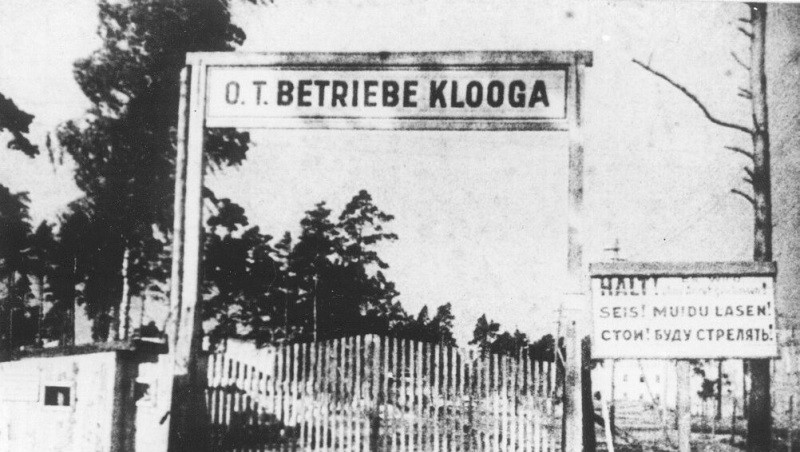
While Latvians started to publicly address this history after the collapse of the Soviet Union, Lenskis says that, “in the 1990’s, Latvia could have done more to deal with these issues because some of the perpetrators were still alive. When people say that Latvia was not active in bringing these people to justice, that’s true. But we have to remember, that Latvian society was focused on its physical survival -which is important- and with discovering what happened under Soviet occupation, which was then totally taboo.”
While the Baltics move towards addressing these historical issues, Russian President Vladimir Putin has been exploiting them, distorting and manipulating facts, to rehabilitate Stalin’s legacy as that of a savior, rather than a brutal totalitarian dictator who is responsible for the deaths of 30 million Russians, Ukrainians, Poles, Latvians, Lithuanians, Jews, Finns, Estonians, Georgians, Armenians among countless other groups.
Among the narratives that the Kremlin has promoted since the Cold War, is that anyone who opposes the Soviet occupation, or questions Stalin’s fatherly benevolence, is a fascist.
Lenskis juxtaposes the Kremlin’s rhetoric with the Soviet kind during the Cold War, where “Soviets claimed that all Latvians were Soviet patriots, while today propaganda outlets would claim “all Latvians are “fascists”, that they’re all antisemites… and constantly mixing things that happened in Lithuania, in Latvia, in Estonia in order to build the stereotype of a ‘Baltic Fascist’.” Soviet propaganda was strongly aimed against Central and Eastern European émigré communities, portraying them not as the refugees from terror and repressions, which most of them were, but as unrepentant Nazi collaborators, who were hiding in the West. This trope is still used today.”
The Kremlin’s historical propaganda, preys on the general lack of historical awareness of the Baltic Sea region in the Western world, and exploits it to de-legitimize Baltic, Ukrainian and Georgian claims of independence.
Lenskis told me that, “those who write about the Baltic experience in WWII, in the West, frequently rely on quick Google searches, which often return links to content produced by Kremlin propagandists who often intentionally misinterprets facts in order to present a distorted version of history.”
Ultimately, the fact that people from different social strata in the Baltic States collaborated with the Nazis must never be denied. When possible, the perpetrators of those crimes must continue to be brought to justice, as should those who committed crimes on behalf of the Soviet Union and The Red Army – regardless of age or where they live.
“When people ask me, ‘can we do more?’ I tell them that we don’t have a ruler to measure this process,” says Lenskis. “But I feel pretty positive, about how this is developing in Latvia. And in recent years, we have made huge progress – very much because of the generational change, and Latvian society is now reconsidering the issue of collaboration and its relationship with the victims.”
Only through ongoing awareness and education, will Western nations protect themselves against the Kremlin’s ongoing efforts to manipulate and distort historical facts in order to advance its own foreign and domestic political agenda. All victims of the Holocaust and Soviet terror deserve justice and respectful commemoration; while those who glorify their terror and repression, warrant unqualified condemnation.
Marcus Kolga is a Canadian foreign disinformation expert, journalist, documentary filmmaker and human rights activist.

